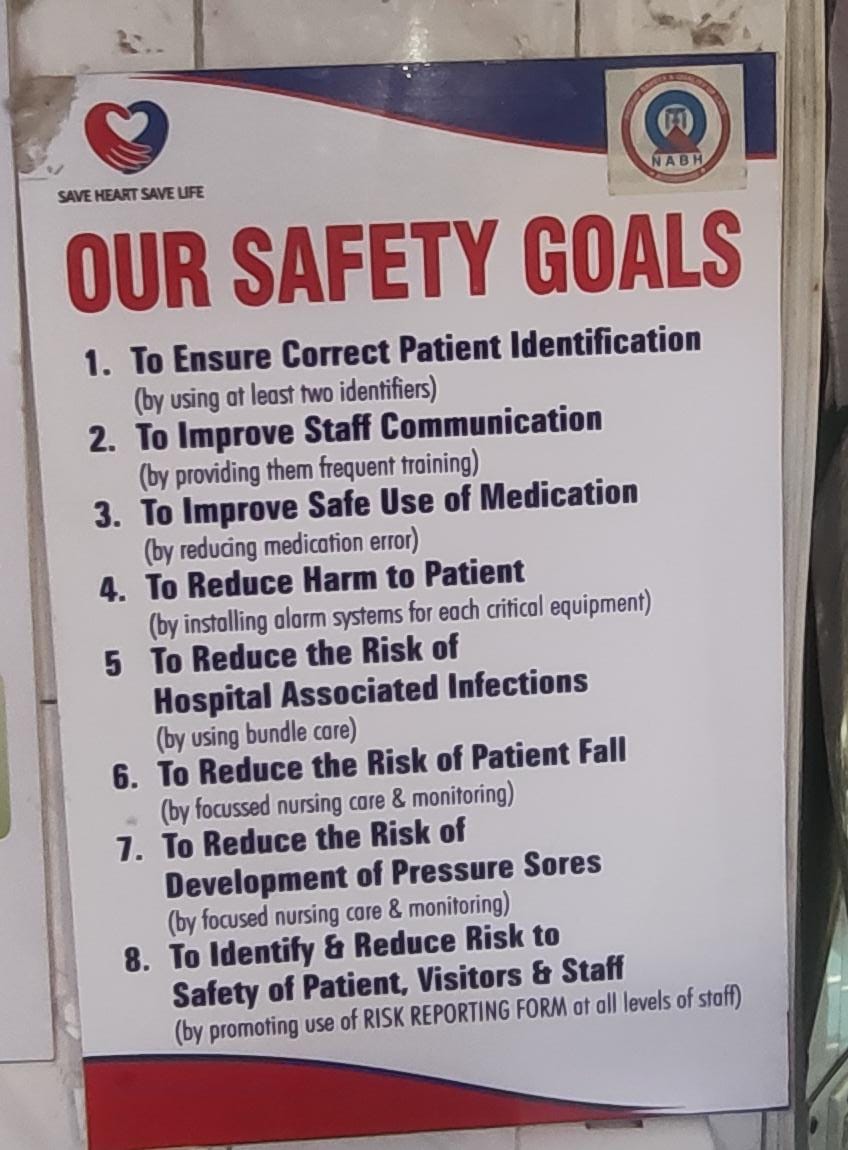What are the safety goals in a healthcare setting?

Understand the Problem
The text outlines safety goals for a healthcare setting, emphasizing patient identification, staff communication, medication safety, and risk reduction among others.
Answer
Correct patient identification, improving staff communication, safe medication use, reducing patient harm, preventing infections, preventing falls, preventing pressure sores, and identifying and reducing risks.
The main safety goals in a healthcare setting are: Correct patient identification, improving staff communication, safe medication use, reducing patient harm, preventing hospital-associated infections, preventing patient falls, preventing pressure sores, and identifying and reducing risks to safety.
Answer for screen readers
The main safety goals in a healthcare setting are: Correct patient identification, improving staff communication, safe medication use, reducing patient harm, preventing hospital-associated infections, preventing patient falls, preventing pressure sores, and identifying and reducing risks to safety.
More Information
These safety goals focus on reducing preventable harm to patients through systemic improvements in identification, communication, medication handling, and specific monitoring and care techniques.
Tips
Common mistakes include inadequate identification methods, insufficient communication training, and failing to regularly review and update safety protocols.
Sources
- National Patient Safety Goals | The Joint Commission - jointcommission.org
- 2024 National Patient Safety Goals: Guide to Effective Strategies - americandatanetwork.com
- What are Patient Safety Goals? 6 Benefits for Healthcare Facilities - careerstaff.com
AI-generated content may contain errors. Please verify critical information